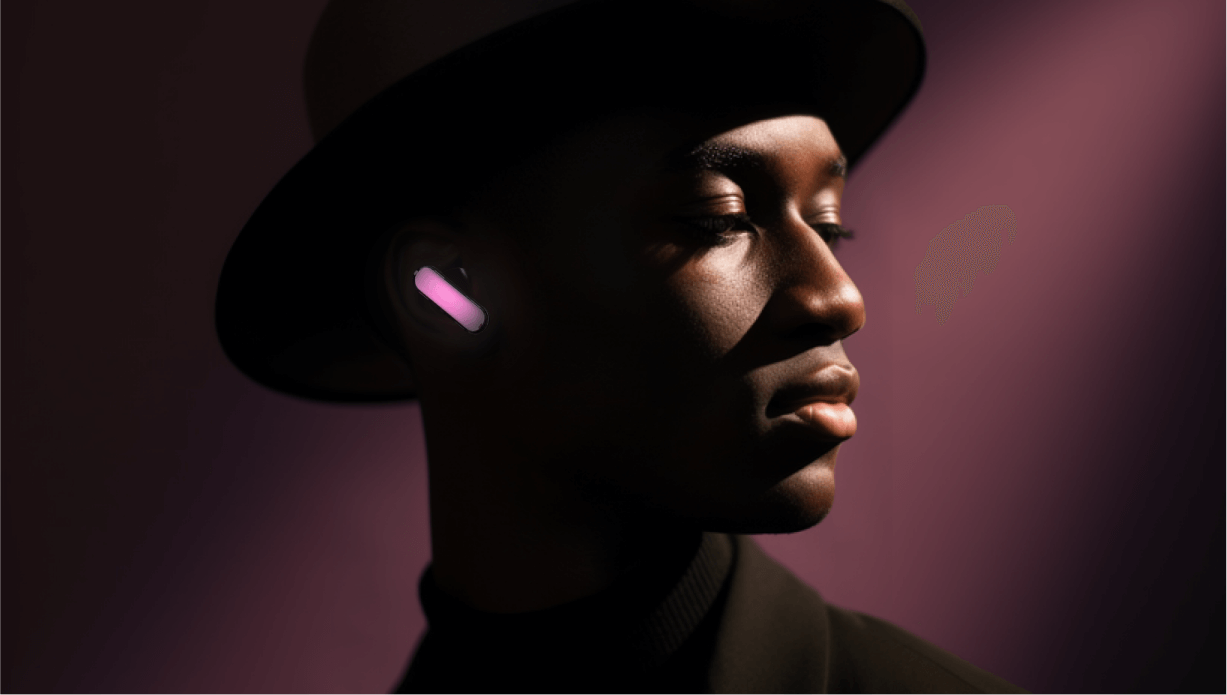How To Know Earbuds Sound Quality
Sound quality is not an abstract term. When you turn on a radio to listen to music or news, when you feel like listening, the radio broadcasts the announcer's voice sweet and layered, with a garden moist. Distortion is low and the music is broadcast with bright highs, rich lows and good reverberation. You naturally can't help but exclaim: "This radio has good sound quality"! Sound quality is the most basic and widely used evaluation term for earbuds.
 Sound has a colour, just like light, but it is not something you see with your eyes, it is something you hear with your ears. The warmer the tone, the softer the sound, the colder the tone, the harder the sound. Tone can be described as "beautiful" or "noble". For example, when listening to a violin, you can say that the sound of the violin is really cold or really warm. Tone staining: the opposite of the natural neutrality of music, i.e. the sound is tainted with characteristics that it does not have, for example the sound you get when you speak into a jar is typical of tone staining. Tone staining indicates that there is something extra (or less) in the played signal, which is clearly a distortion.
Sound has a colour, just like light, but it is not something you see with your eyes, it is something you hear with your ears. The warmer the tone, the softer the sound, the colder the tone, the harder the sound. Tone can be described as "beautiful" or "noble". For example, when listening to a violin, you can say that the sound of the violin is really cold or really warm. Tone staining: the opposite of the natural neutrality of music, i.e. the sound is tainted with characteristics that it does not have, for example the sound you get when you speak into a jar is typical of tone staining. Tone staining indicates that there is something extra (or less) in the played signal, which is clearly a distortion.
earbuds sound quality is a standard that seems difficult to judge. In fact it can be objectively measured by some of the following latitudes. But everyone's ear and sense of hearing are different.
In the end, each person's conclusion may be different.
The output of a device does not fully reproduce its input, resulting in distortion of the waveform or an increase or decrease in signal composition.
the ratio of the maximum information recorded to the minimum information.
the ability of the equipment to follow sudden signals in the music. A good transient response should be immediate as soon as the signal comes in, and stop as soon as the signal stops, never dragging. (Typical instrument: piano).
refers to the lowest frequency that can be played back by audio equipment. It is used to determine the scale to which the audio system or speaker can dive when playing bass. For example, small subwoofer low frequency extension can be to 40Hz, while the large subwoofer dive to 16Hz.
refers to highlighting the high frequency range of 4kHz-8kHz, when the harmonics are relatively stronger than the fundamental. Clearness itself is not a problem, live music will have a clear sound, the problem is clear to master the right proportion, too clear (even whistling) will be annoying.
The ability to express subtle changes in the music, both at low levels and at high levels, combined with low and high levels, is what we call resolution.
This is mainly about the appropriate volume distribution between the high, mid and low frequency bands. A reasonable amount of high, medium and low is the overall balance, listening to music feel soft but strong, bright, cheerful and layered, clear, integrated and three-dimensional sense. If you have a strong sense of presence, then good audio equipment will be reflected in its overall.
 Sound has a colour, just like light, but it is not something you see with your eyes, it is something you hear with your ears. The warmer the tone, the softer the sound, the colder the tone, the harder the sound. Tone can be described as "beautiful" or "noble". For example, when listening to a violin, you can say that the sound of the violin is really cold or really warm. Tone staining: the opposite of the natural neutrality of music, i.e. the sound is tainted with characteristics that it does not have, for example the sound you get when you speak into a jar is typical of tone staining. Tone staining indicates that there is something extra (or less) in the played signal, which is clearly a distortion.
Sound has a colour, just like light, but it is not something you see with your eyes, it is something you hear with your ears. The warmer the tone, the softer the sound, the colder the tone, the harder the sound. Tone can be described as "beautiful" or "noble". For example, when listening to a violin, you can say that the sound of the violin is really cold or really warm. Tone staining: the opposite of the natural neutrality of music, i.e. the sound is tainted with characteristics that it does not have, for example the sound you get when you speak into a jar is typical of tone staining. Tone staining indicates that there is something extra (or less) in the played signal, which is clearly a distortion.earbuds sound quality is a standard that seems difficult to judge. In fact it can be objectively measured by some of the following latitudes. But everyone's ear and sense of hearing are different.
In the end, each person's conclusion may be different.
The output of a device does not fully reproduce its input, resulting in distortion of the waveform or an increase or decrease in signal composition.
the ratio of the maximum information recorded to the minimum information.
the ability of the equipment to follow sudden signals in the music. A good transient response should be immediate as soon as the signal comes in, and stop as soon as the signal stops, never dragging. (Typical instrument: piano).
refers to the lowest frequency that can be played back by audio equipment. It is used to determine the scale to which the audio system or speaker can dive when playing bass. For example, small subwoofer low frequency extension can be to 40Hz, while the large subwoofer dive to 16Hz.
refers to highlighting the high frequency range of 4kHz-8kHz, when the harmonics are relatively stronger than the fundamental. Clearness itself is not a problem, live music will have a clear sound, the problem is clear to master the right proportion, too clear (even whistling) will be annoying.
The ability to express subtle changes in the music, both at low levels and at high levels, combined with low and high levels, is what we call resolution.
This is mainly about the appropriate volume distribution between the high, mid and low frequency bands. A reasonable amount of high, medium and low is the overall balance, listening to music feel soft but strong, bright, cheerful and layered, clear, integrated and three-dimensional sense. If you have a strong sense of presence, then good audio equipment will be reflected in its overall.










Leave a comment